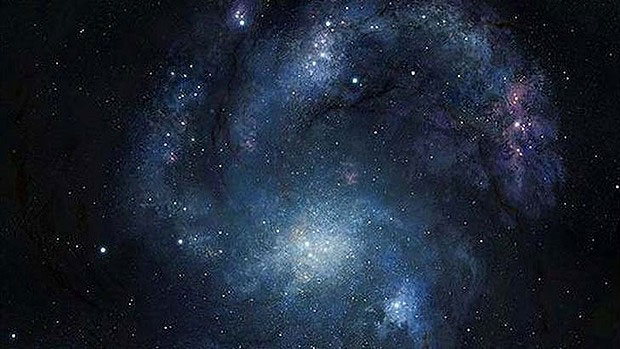Detecting spiral galaxies in the early universe
The results of American astronomers published in Nature on July 18 said they were surprised to find a spiral galaxy forming nearly 11 billion years ago.
Dubbed BX442 , this ancient star cluster was discovered in a survey of nearly 300 distant galaxies using the Hubble space telescope and the Keck Observatory in Hawaii.

BX442 Galaxy
Located 1.7 billion light-years from Earth, this galaxy was formed about 3 billion years after the universe was born in a superheated explosion called Big Bang.
Alice Shapley of the University of California (Los Angeles) shared: "We were very surprised and did not have any warning signs, BX442 and its spiral galaxy appear through the image of the lens. I can't quite believe this, nor do we think this galaxy has such a grand picture, because most star-forming galaxies in the early universe often have sporadic and bizarre patterns. ".
BX442 is considered to be the first "beautiful model" spiral galaxy discovered quite early in history.
Called the spiral galaxy because the BX442 has a separate spiral-shaped branch structure in the opposite direction from the center to the galaxy disk, the model resembles an S similar to our Milky Way. Other galaxies often have chaotic and bizarre designs, when they meet high temperature conditions they are turned into spiral form. So the discovery of BX442 tells us the relationship between the original chaotic galaxies and the spiral-shaped galaxies that we see today.
This special discovery will also help astronomers better understand the galaxy's mysterious formation process in the vast universe.
- 'The cosmic eye' emerged from the clash between the two galaxies
- Detecting the monstrous galaxy UGC 1382 in space
- The mystery of the dead galaxies
- Shining spiral galaxies in the universe
- Detecting a group of 'ghost galaxies'
- How many galaxies in the universe?
- Detecting the galaxy seems to not exist
- New Hubble telescope image of the hybrid galaxy UGC 12591
- Detecting small galaxies similar to the early Milky Way
- The Milky Way is lighter than we thought
- The history of the universe compressed for a year
- The 84 million star image is at the center of the universe
 Van Allen's belt and evidence that the Apollo 11 mission to the Moon was myth
Van Allen's belt and evidence that the Apollo 11 mission to the Moon was myth The levels of civilization in the universe (Kardashev scale)
The levels of civilization in the universe (Kardashev scale) Today Mars, the sun and the Earth are aligned
Today Mars, the sun and the Earth are aligned The Amazon owner announced a secret plan to build a space base for thousands of people
The Amazon owner announced a secret plan to build a space base for thousands of people